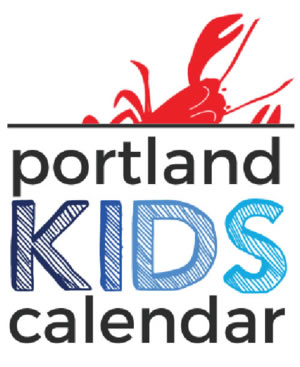Organic? Light? Free-Range? Find out what food labels *really* mean.
Have you ever picked one grocery item over another because of the health claims on the label? You may have been duped. That’s because terms like fat free or all natural are often slapped on a food item that may not be healthy at all. Frustrated? You’re not alone. Nearly 59% of consumers have a hard time understanding nutrition labels, according to a Nielsen survey.
Here’s our list of the 16 most common and misleading phrases manufacturers use on food, with advice on how to look past the hype to make smarter supermarket choices.
#1 All Natural
Don’t be fooled, all natural doesn’t mean all that much. The Food and Drug Administration doesn’t define it, although food makers won’t get in trouble as long as so-labeled food doesn’t contain added colors, artificial flavors, or “synthetic substances.” So a food labeled natural may contain preservatives or be injected with sodium, in the case of raw chicken. “Some natural products will have high fructose corn syrup and companies will argue that since it comes from corn, it’s healthy,” says Stephan Gardner, director of litigation at the Center of Science in the Public Interest (CSPI). “Well, that isn’t true.”
#2 Multigrain
When shopping for healthy bread and crackers, look for the words whole grain or 100% whole wheat. It’s not enough if it says multigrain or made with whole grain. Whole grains, (which include popcorn, brown rice, and oatmeal), have more fiber and other nutrients than those that have been refined, a process that strips away the healthiest portions of the grain. And don’t go by color alone: Some darker breads or crackers have caramel coloring and are no healthier than highly refined white breads.
#3 No Sugar Added
If you’re concerned about calories and carbs, you may toss no sugar added products in your grocery cart. But foods, including fruit, milk, cereals, and vegetables naturally contain sugar. So although these products may not have added sugar they still may contain natural sugars. And no sugar added products still may contain added ingredients like maltodextrin, a carbohydrate.
#4 Sugar Free
Sugar free doesn’t mean a product has fewer calories than the regular version; it may have more. Sugar-free products have less than 0.5 grams of sugars per serving, but they still contain calories and carbohydrates from other sources. These products often contain sugar alcohols, which are lower in calories (roughly 2 calories per gram, compared to 4 per gram for sugar), but compare labels to see if the sugar-free version is any better than the regular version. (Common sugar alcohols are mannitol, xylitol, or sorbitol).
#5 Zero Trans Fat
Trans fat is bad for your heart, and the ideal intake is zero. But products that say no trans fat can actually contain less than 0.5 grams per serving. Check for words on the ingredient list such as hydrogenated oils and shortening, which mean trans fat is still present. There are some products that are more likely to contain trans fat than others.
#6 Free range
Although a food label may say free range chicken, don’t assume your bird was scampering around outside Farmer Brown’s barn. Although the US Department of Agriculture does define the words free range, there are no requirements for the amount, duration, and quality of outdoor access. “What it’s supposed to mean is that they are out running in a field,” says Bonnie Taub-Dix, nutrition expert and author of Read It, Before You Eat It. “But what it really means is they just have exposure to the outdoors.”
#7 Fat Free
This is a notoriously misleading label. When the dangers of saturated and trans fat became clear, the market was flooded with products that touted their fat-free status. The problem? They sometimes contained nearly as many calories as full-fat versions. Check the label for calorie content, and compare it to the full-fat version.
#8 Light
A food label may say a product, such as olive oil, is light, but manufacturers have been known to use the term to refer to the flavor rather than the ingredients. The flavor might be lighter, but you aren’t saving one calorie. To be considered a light product, the fat content has to be 50% less than the amount found in comparable products.
#9 Cholesterol Free
Cholesterol free doesn’t mean, literally, “no cholesterol”. Cholesterol-free products must contain less than 2 mg per serving while low-cholesterol products contain 20 mg or less per serving. Foods that say reduced or less cholesterol need to have at least 25% less than comparable products. Cholesterol is made by the liver, so only animal products like meat, dairy, eggs, and butter can contain it. If a plant-based product (such as corn oil) touts its cholesterol-free status, there’s no benefit compared to other vegetable oils, which also don’t contain it. (The American Heart Association recommends people consume less than 300 mg of cholesterol daily.)
#10 Organic
While organic was once a bit like the term all natural, that’s no longer true. If a product has a USDA label that says organic, 95% or more of the ingredients must have been grown or processed without synthetic fertilizers or pesticides (among other standards). A label that says made with organic ingredients must have a minimum of 70% all ingredients that meet the standard.
#11 Enriched
Not to be confused with fortified, enriched means that the nutrients have been added back into a food that may have lost them during the refining process. People often think that this means the food has additional vitamins and minerals, but that’s not the case. Food companies simply put back what was once there. The most common example of this is enriched flour. During the refining process, essential B vitamins and iron are lost; therefore, they are added back in.
#12 Fortified
The fortification process means that an item has added vitamins and minerals in addition to the ones that are naturally-occurring. Plenty of foods are fortified to ensure adequate nutrition for the general population. For instance, milk is fortified with Vitamin A and D and pasta and bread with folic acid, an essential nutrient in preventing neural tube defects in infants.
#13 Low Carb
Surprisingly, there are no set guidelines for this claim. FDA? This leaves a lot of room for misleading labeling and frivolous purchasing. Often, when a high carbohydrate food is modified to become a low-carb food, the fat and calorie content goes up. It’s better to choose foods that are naturally low in carbohydrates such as nuts (in moderation), tofu and of course, vegetables.
#14 Low Sodium
Foods that claim to be low sodium must contain 140 milligrams or less per serving. The 2010 Dietary Guidelines for Americans recommend fewer than 2,300 milligrams of sodium a day to prevent hypertension and risk for stroke. Needless to say, this is an important label to pay attention to!
Article courtesy of MSN Health and Huffington Post.





